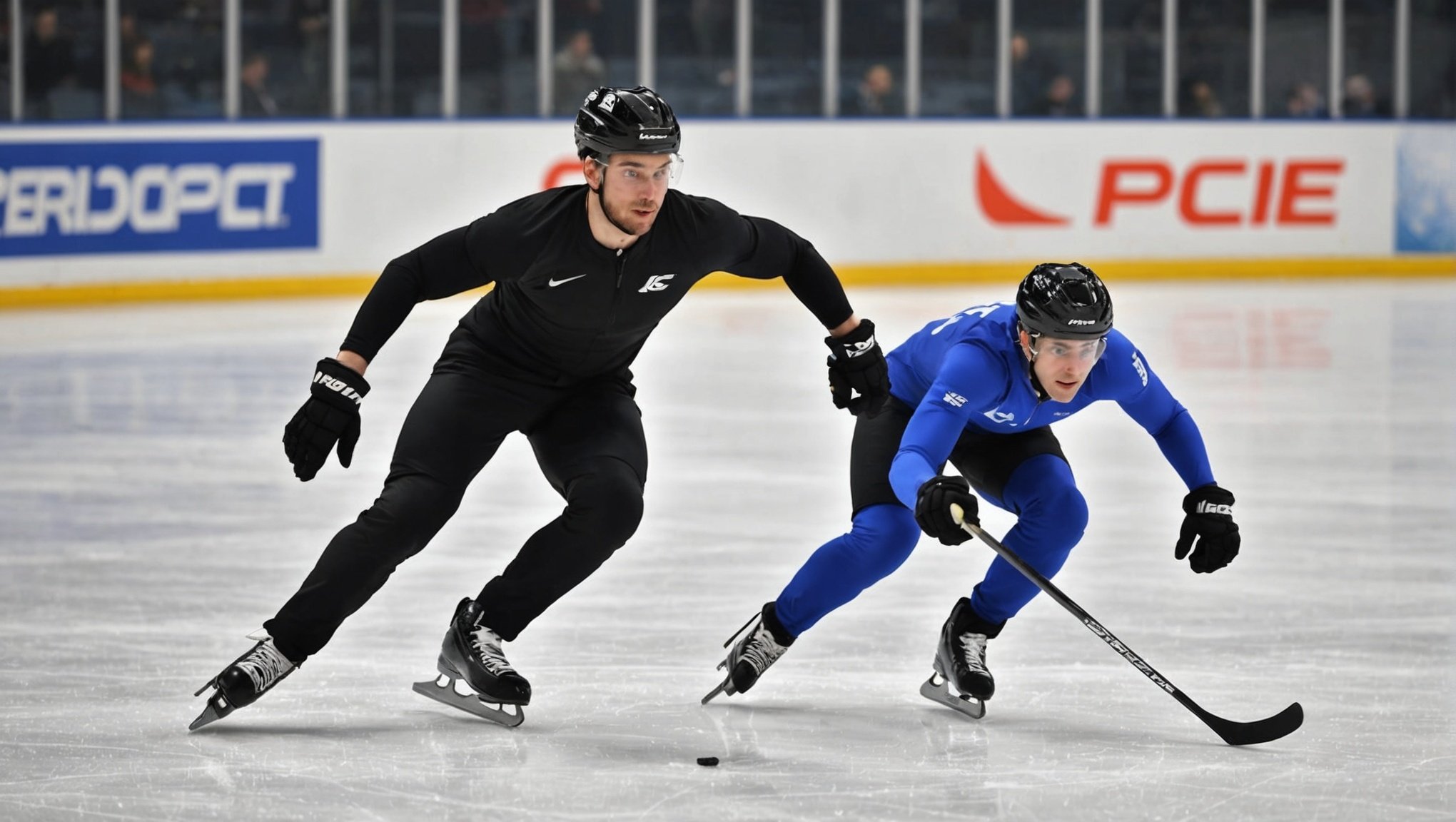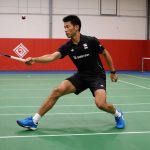Unlocking Perfect Spins: Boosting Ice Skating Performance with Focused Strength Training Techniques
The Importance of Strength Training in Ice Skating
When it comes to ice skating, whether you’re a figure skater or a hockey player, having a strong foundation is crucial for optimal performance. Strength training is often overlooked in favor of on-ice practice, but it is a vital component of improving your skating skills, particularly when it comes to mastering complex elements like spins.
“Strength training helps figure skaters develop the power, endurance, and stability needed to perform intricate jumps and spins,” notes Natalya Khazova, a renowned figure skating coach. “It’s not just about the lower body; core strength and upper body stability are equally important for maintaining balance and control.”
Also to discover : Unlocking Success: Proven Strategies for Equestrian Riders to Elevate Jumping Techniques and Boost Scores
Building Core Strength for Stability and Balance
Core strength is the backbone of any successful skating performance. It helps in maintaining balance, stability, and control, which are essential for executing spins with precision.
Key Core Exercises
- Plank: This exercise targets the entire core, including the abs, obliques, and lower back. Hold a plank position for 30-60 seconds, rest for 30 seconds, and repeat for 3-5 sets.
- Russian Twists: This exercise focuses on the obliques. Lie on your back with knees bent and feet flat on the floor, holding a weight or medicine ball. Twist your torso to left and right, touching the weight to the ground beside you.
- Leg Raises: Lie on your back with arms extended overhead and raise your legs straight up towards the ceiling. Lower your legs back down without touching the floor, then repeat.
Strengthening the Lower Body for Power and Mobility
The lower body, including the hips, legs, and glutes, is critical for generating power and maintaining balance on the ice.
Also to see : Mastering the Waves: Strategies for Professional Surfers to Adapt Their Techniques to Varying Ocean Conditions
Key Lower Body Exercises
- Squats: Squats work multiple muscle groups, including the quadriceps, hamstrings, and glutes. Stand with feet shoulder-width apart, then bend your knees and lower your body until your thighs are parallel to the ground.
- Lunges: Lunges target the quadriceps, hamstrings, and glutes. Step forward with one foot and lower your body until your back knee almost touches the ground. Push back to the starting position and repeat with the other leg.
- Leg Press: This exercise targets the quadriceps, hamstrings, and glutes. Sit in a leg press machine and push the platform away from you with your feet.
Flexibility and Mobility: The Unsung Heroes of Ice Skating
Flexibility and mobility are often overlooked but are crucial for maintaining proper form and executing complex movements like spins.
Key Flexibility and Mobility Exercises
- Hamstring Stretches: Stand with your feet shoulder-width apart, then bend forward at the hips to stretch your hamstrings.
- Hip Flexor Stretches: Kneel on all fours, bring one knee forward, and place your foot flat on the ground in front of the other knee. Lean forward to stretch the hip flexor of the back leg.
- Leg Swings: Stand with your feet hip-width apart and swing one leg forward and backward, then switch to the other leg.
Training the Hip Flexors for Enhanced Spin Performance
Hip flexors play a significant role in ice skating, particularly in spins where the free leg is extended and the body is twisted.
Exercises to Target Hip Flexors
- Lunges with a Twist: Perform a lunge and as you step forward, twist your upper body to the side of the front leg. This helps in strengthening the hip flexors and improving mobility.
- Step-Ups: Use a step or bench to perform step-ups. This exercise targets the hip flexors as well as other lower body muscles.
Upper Body Strength for Balance Control
While the lower body and core are critical, upper body strength is also essential for maintaining balance and control, especially during spins.
Key Upper Body Exercises
- Push-Ups: Push-ups target the chest, shoulders, and triceps. Start in a plank position and lower your body until your chest almost touches the ground.
- Rows: Rows target the back and shoulders. Use dumbbells or a rowing machine to perform rows.
- Shoulder Press: This exercise targets the shoulders. Stand or sit with dumbbells at shoulder height, then press the dumbbells straight up over your head.
On-Ice Drills to Enhance Spin Performance
Once you’ve built a strong foundation through off-ice training, it’s time to translate that strength into on-ice performance.
Drills for Improving Spin Technique
- Edge Work: Focus on maintaining strong edges while gliding on one foot. This can be practiced by doing slaloms or figure-eights on the ice.
- Free Leg Positioning: Practice extending your free leg in different positions to improve your range of motion and balance. For example, in a camel spin, the free leg is extended behind the body, while in a sit spin, it is extended forward.
- Upper Body Positioning: Maintain proper upper body positioning during spins. Keep your core engaged and your shoulders relaxed to help maintain balance and control.
Table: Comparing Strength Training Needs for Figure Skaters and Hockey Players
| Aspect | Figure Skaters | Hockey Players |
|---|---|---|
| Core Strength | Essential for balance and stability during jumps and spins. | Important for maintaining posture and generating power during skating. |
| Lower Body | Focus on hip flexors, quadriceps, and hamstrings for jump and spin power. | Emphasis on quadriceps, hamstrings, and glutes for speed and agility. |
| Flexibility | High flexibility required for intricate movements and poses. | Moderate flexibility needed for quick changes in direction. |
| Upper Body | Important for balance control and maintaining posture during spins. | Crucial for checking and maintaining position on the ice. |
| Mobility | High mobility needed for range of motion in spins and jumps. | Moderate mobility required for quick movements and changes in direction. |
Practical Insights and Actionable Advice
Creating a Balanced Training Program
A well-rounded training program should include a mix of strength training, flexibility exercises, and on-ice drills.
- Off-Ice Training: Allocate 2-3 days a week for off-ice training, focusing on core strength, lower body power, and upper body stability.
- On-Ice Training: Spend at least 3-4 days a week on the ice, practicing edge work, free leg positioning, and spin technique.
- Flexibility and Mobility: Incorporate flexibility and mobility exercises into your daily routine, both on and off the ice.
Maintaining Proper Form
Proper form is crucial for preventing injuries and optimizing performance.
- Core Engagement: Always keep your core engaged, whether you’re performing squats or executing a spin on the ice.
- Hip Alignment: Ensure your hips are aligned properly during exercises and on-ice drills to avoid straining your lower back.
- Upper Body Relaxation: Keep your shoulders relaxed and your upper body stable to maintain balance and control.
Unlocking perfect spins in ice skating requires a holistic approach that includes focused strength training, flexibility exercises, and on-ice drills. By building a strong foundation with core strength, lower body power, and upper body stability, you can enhance your performance and master complex elements like spins.
“Remember, it’s not just about the physical strength; it’s also about mental focus and practice,” advises Natalya Khazova. “With a balanced training program and proper form, you can take your skating to the next level and achieve your goals on the ice.”
Whether you’re a figure skater aiming for the world stage or a hockey player looking to improve your game, incorporating these strength training techniques into your routine will help you spin with precision, power, and finesse.











